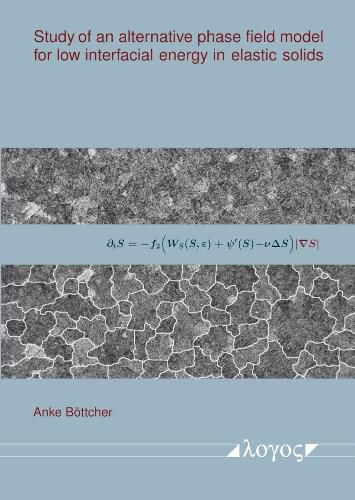Readings Newsletter
Become a Readings Member to make your shopping experience even easier.
Sign in or sign up for free!
You’re not far away from qualifying for FREE standard shipping within Australia
You’ve qualified for FREE standard shipping within Australia
The cart is loading…






In 2005, the hybrid model was published by Prof. H.-D. Alber and Prof. P. Zhu as an alternative to the Allen-Cahn model for the description of phase field transformations. With low interfacial energy, it is more efficient, since the resolution of the diffuse interface is numerically broader for the same solution accuracy and allows coarser meshing. The solutions of both models are associated with energy minimisation and in this work the error terms introduced in the earlier publications are discussed and documented using one and two dimensional numerical simulations. In the last part of this book, phase field problems, initially not coupled with material equations, are combined with linear elasticity and, after simple introductory examples, a growing martensitic inclusion is simulated and compared with literature data. In addition to the confirmed numerical advantage, another phenomenon not previously described in the literature is found: with the hybrid model, in contrast to the examples calculated with the Allen-Cahn model, an inclusion driven mainly by curvature energy does not disappear completely. The opposite problem prevents inclusions from growing from very small initial configurations, but this fact can be remedied by a very finely chosen diffuse interface width and by analysing and adjusting the terms that generate the modelling errors. The last example shows that the hybrid model can be used with numerical advantages despite the above mentioned peculiarities.
$9.00 standard shipping within Australia
FREE standard shipping within Australia for orders over $100.00
Express & International shipping calculated at checkout
In 2005, the hybrid model was published by Prof. H.-D. Alber and Prof. P. Zhu as an alternative to the Allen-Cahn model for the description of phase field transformations. With low interfacial energy, it is more efficient, since the resolution of the diffuse interface is numerically broader for the same solution accuracy and allows coarser meshing. The solutions of both models are associated with energy minimisation and in this work the error terms introduced in the earlier publications are discussed and documented using one and two dimensional numerical simulations. In the last part of this book, phase field problems, initially not coupled with material equations, are combined with linear elasticity and, after simple introductory examples, a growing martensitic inclusion is simulated and compared with literature data. In addition to the confirmed numerical advantage, another phenomenon not previously described in the literature is found: with the hybrid model, in contrast to the examples calculated with the Allen-Cahn model, an inclusion driven mainly by curvature energy does not disappear completely. The opposite problem prevents inclusions from growing from very small initial configurations, but this fact can be remedied by a very finely chosen diffuse interface width and by analysing and adjusting the terms that generate the modelling errors. The last example shows that the hybrid model can be used with numerical advantages despite the above mentioned peculiarities.